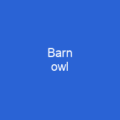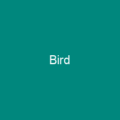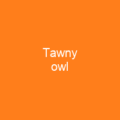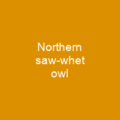The Enigma of the Australian Boobook Owl
Imagine a small, mysterious owl that has been around for centuries, yet still holds many secrets. The Australian boobook (Ninox boobook), also known as the ‘native owl,’ is one such enigmatic creature. Described by John Latham in 1801, this bird has captivated ornithologists and nature enthusiasts alike with its unique characteristics and intriguing history.
Subspecies and Taxonomy: A Complex Puzzle
The Australian boobook is not just one species but a collection of three recognized subspecies. Each carries its own distinct traits, making the taxonomy of this owl complex indeed. For instance, Ninox boobook halmaturina found on Kangaroo Island has darker and reddish plumage, while Ninox boobook lurida, from north Queensland, is small and dark with a reddish tinge.
These subspecies were once grouped under one species by Dutch naturalist Gerlof Mees in 1964. However, in 2008, a study suggested that the Australian boobook is distinct from other related species like the morepork and Tasmanian boobook. Ernst Mayr’s work further complicated matters, leading to reclassifications based on genetic and call analysis.
Physical Characteristics: A Compact Predator
The Australian boobook is the smallest owl on mainland Australia, measuring between 27-36 cm long. Its dark-brown plumage features pale spots, and its grey-green eyes make it a fascinating sight in the night sky. This bird’s nocturnal lifestyle allows it to hunt insects and small vertebrates with ease.
Interestingly, females are larger and heavier than males, weighing between 146-360g for males and 170-298g for females. The Australian boobook has a distinctive face mask with a pale border, which helps it blend into its environment while hunting. Its eyes can range from grey-green to green-yellow or light hazel, adding to the owl’s mysterious allure.
Geographic Distribution: A Widespread Presence
The Australian boobook is found across mainland Australia, with a few notable exceptions. It thrives in eucalypt forests but has adapted well to human-altered landscapes, making it common in farmland and suburban areas as long as some scattered trees are present.
While the bird can be seen in various regions, it is scarce in more arid areas such as western New South Wales, southwestern Queensland, much of South Australia away from the coast, interior Western Australia, and Northern Territory. However, it can still be found along watercourses like the Darling and Paroo Rivers and Lake Eyre Basin.
Behavioral Traits: A Nocturnal Hunter
The Australian boobook is a nocturnal species, but it may also be active at dawn and dusk. Its characteristic ‘boo-book’ call can be heard up to 1 km away, making it easier for researchers to locate these elusive birds.
During the breeding season, which occurs from July to February with peaks in October, Australian boobook owls maintain and defend their territories during the day. They are often mobbed by passerines but may allow people to approach within 1-3 meters. The male’s call is higher pitched and shorter in duration, while females use a lower pitch and longer duration.
Reproduction: A Family Affair
Breeding occurs from July to February, with peaks in October. Eggs are laid between August and November in different regions, usually in holes 1-20 meters above the ground. The female incubates the eggs for about 30-31 days, while chicks hatch together or sometimes separately.
Newly hatched chicks are blind, helpless (nidicolous), and covered in whitish down. Their eyes open on day 6 and fully open by day 15. Juvenile feathers grow from days 7-10. Young birds leave the nest 5-6 weeks after hatching but live with their parents for 2-4 months before dispersing.
Chicks are preyed upon by various predators, including brushtail possums, cats, rats, and raptors. Despite these challenges, the Australian boobook’s conservation status is currently listed as ‘species of least concern’ due to its widespread range and stable population.
Conservation: A Call for Protection
While the Australian boobook faces no immediate threats, there have been declines in some areas due to owls consuming rodents killed with second-generation anticoagulant rat poison. This highlights the importance of protecting not only the owl but also its prey and habitat.
The bird is protected under Appendix II of the Convention on International Trade in Endangered Species of Wild Fauna and Flora, ensuring that trade does not threaten its survival.

The Australian boobook owl is a fascinating creature that continues to intrigue scientists and nature lovers. Its complex taxonomy, unique physical characteristics, widespread distribution, and nocturnal behavior make it an integral part of Australia’s rich avian heritage. As we continue to learn more about this species, let us also remember the importance of protecting our natural environment for these beautiful birds.
You want to know more about Australian boobook?
This page is based on the article Australian boobook published in Wikipedia (retrieved on November 28, 2024) and was automatically summarized using artificial intelligence.







